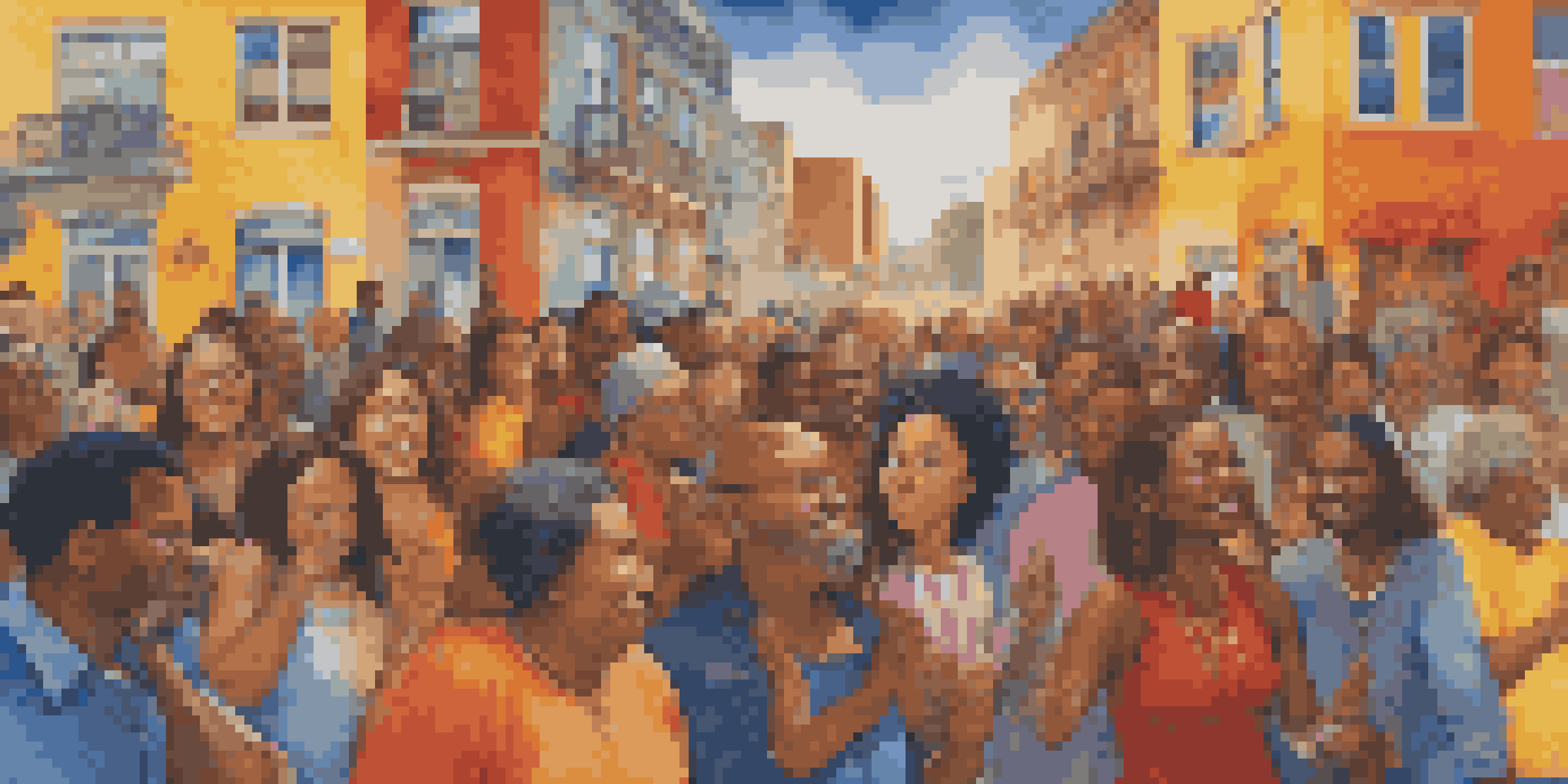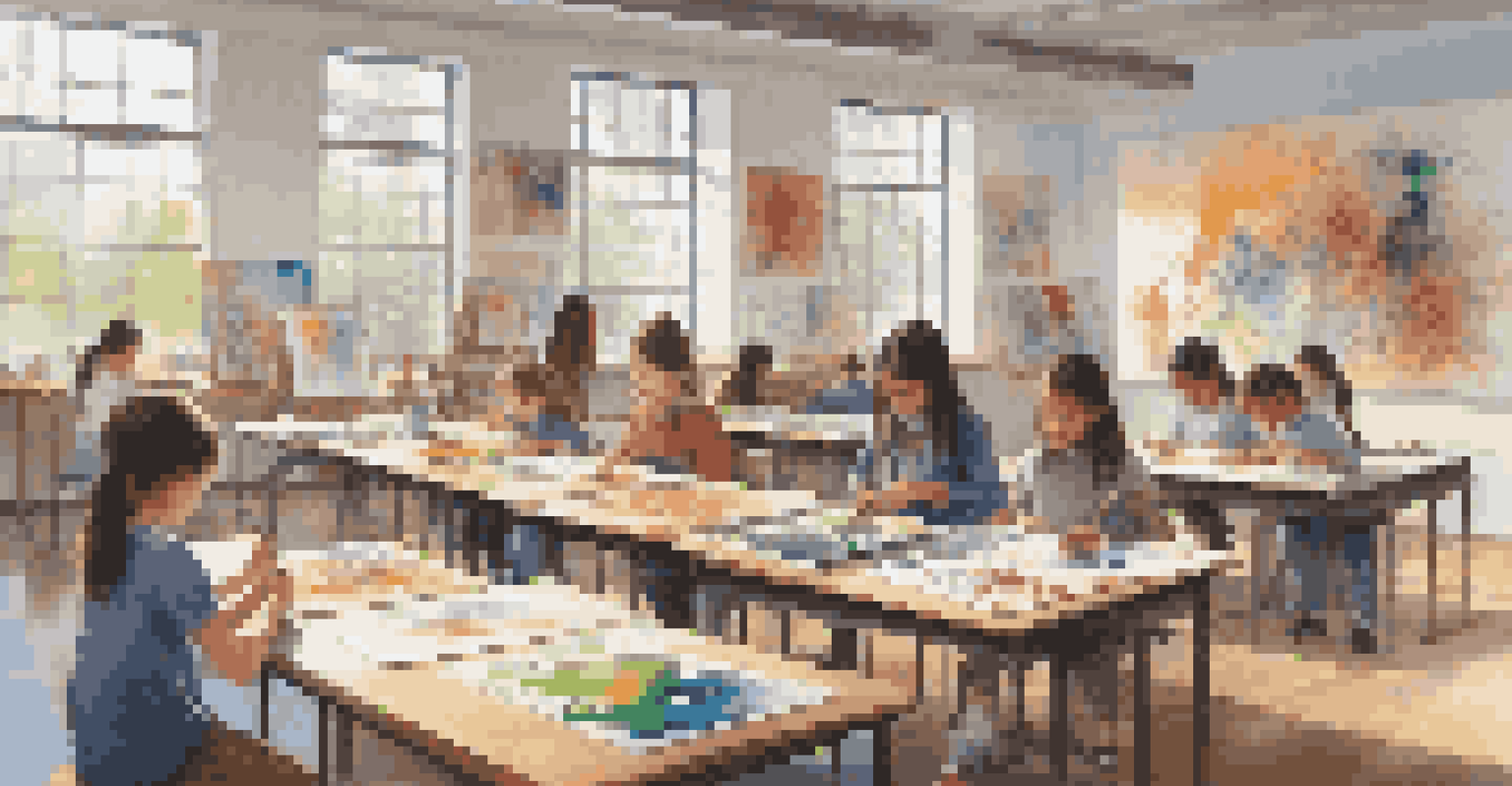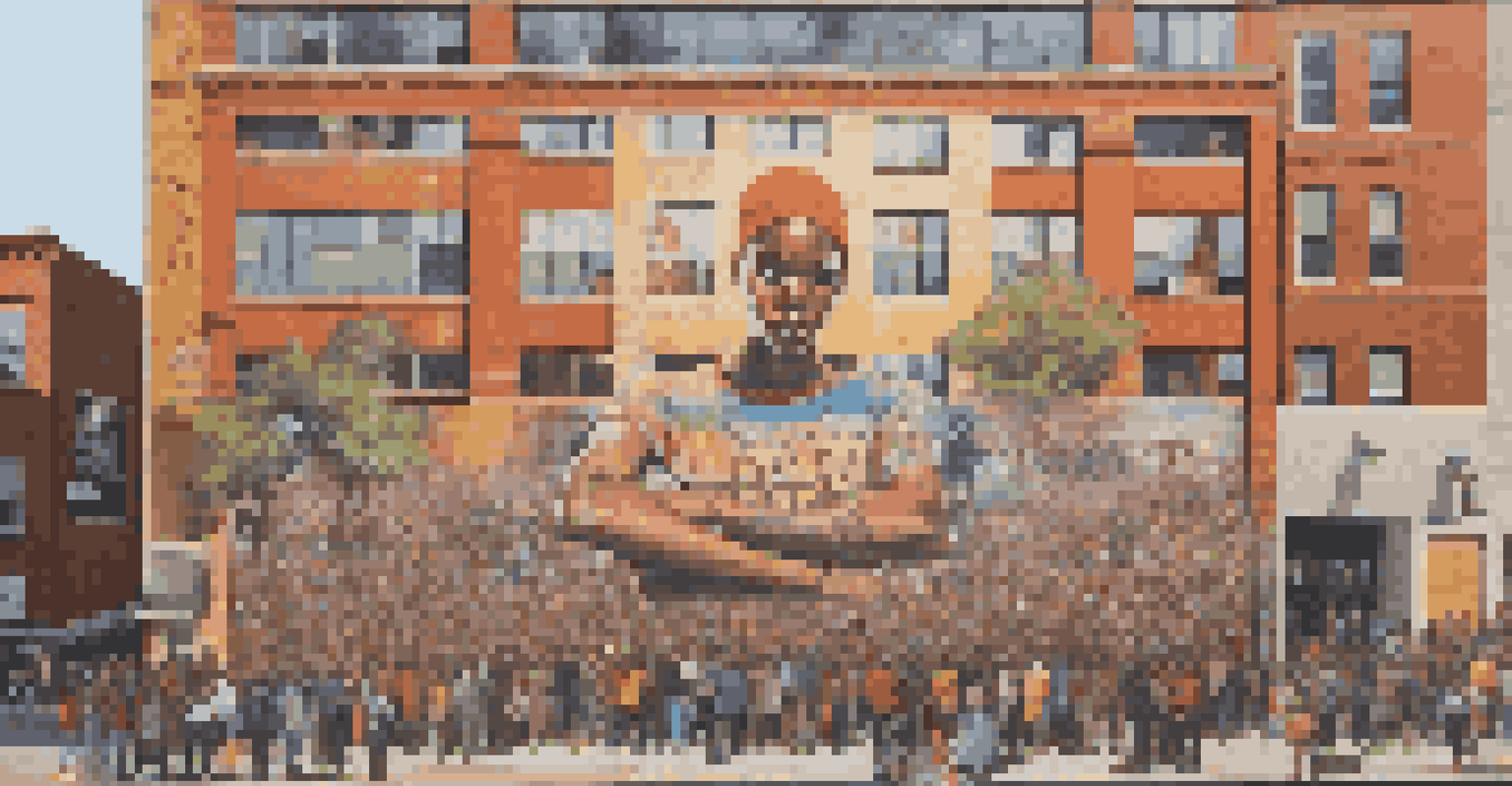Art as a Reflection of Social Issues Across Cultures

Understanding Art's Role in Society and Culture
Art has always been a powerful medium for expressing human emotions and experiences. Across different cultures, it serves as a reflection of societal values, beliefs, and issues. By examining various art forms, we can gain insights into the struggles and triumphs of communities, making it a vital tool for understanding cultural narratives.
Art is not a mirror to reflect the world, but a hammer with which to shape it.
From paintings and sculptures to performance art and literature, each piece often tells a story that resonates with its audience. For instance, the famous muralist Diego Rivera used his works to address class struggle and social injustice in Mexico. This illustrates how artists can spark conversations around critical social issues, encouraging viewers to engage and reflect.
In essence, art acts as a mirror, reflecting not just the beauty of a culture but also its challenges and conflicts. This duality enriches our understanding and appreciation of the intricate tapestry of human experiences, emphasizing the importance of art in social discourse.
Historical Context: Art Movements and Social Change
Throughout history, art movements have often emerged in response to social changes, political upheaval, or cultural shifts. For example, the Harlem Renaissance was a vibrant period where African American artists celebrated their heritage while addressing issues such as racism and identity. This movement not only transformed the art landscape but also paved the way for future generations to express their struggles.

Similarly, the Dada movement arose as a reaction to the horrors of World War I, critiquing the very foundations of society. Artists like Marcel Duchamp challenged traditional aesthetics, pushing boundaries to provoke thought and discussion about the absurdities of war and nationalism. This shows how art can be a revolutionary force in shaping societal perspectives.
Art Reflects Social Issues
Art serves as a powerful medium for expressing and reflecting societal values, challenges, and narratives across cultures.
Art movements, therefore, become historical touchstones, capturing the zeitgeist of their times. They remind us that artists often wield their creativity as a means of protest, reflection, and transformation, influencing public consciousness and encouraging social change.
Contemporary Art: Addressing Modern Social Issues
In today's world, contemporary artists continue to tackle pressing social issues, using their platforms to raise awareness and inspire action. Issues such as climate change, racial inequality, and mental health are prevalent themes in the works of many modern artists. For instance, Banksy’s thought-provoking street art often highlights social injustice and consumerism, prompting viewers to think critically about these topics.
Every artist dips his brush in his own soul, and paints his own nature into his pictures.
Moreover, the rise of digital art has expanded the ways artists engage with social issues. Platforms like social media allow for greater visibility and interaction, enabling artists to reach broader audiences and foster community discussions. This interconnectedness helps amplify marginalized voices and encourages collective action.
Contemporary art thus remains a vital avenue for social commentary, blurring the lines between creator and observer. By engaging with these artworks, we become part of a larger conversation about the world we live in, highlighting the ongoing relevance of art as a social reflection.
Cultural Differences: Unique Artistic Expressions
Different cultures have unique ways of expressing social issues through art, shaped by their specific histories and experiences. For example, Indigenous art often encapsulates themes of connection to land, identity, and resilience in the face of colonization. Artists like Norval Morrisseau have used their craft to tell stories that reflect their cultural heritage and social challenges.
In contrast, Western art may focus more on individualism and personal narratives, often exploring themes of capitalism, identity, and existentialism. This is evident in the works of artists like Ai Weiwei, who uses his art as a form of activism against governmental oppression, blending personal and political commentary.
Art Movements Drive Change
Historical art movements often arise in response to social and political changes, acting as catalysts for societal transformation.
These cultural differences enrich the global art landscape, offering varied perspectives on social issues. By understanding these diverse expressions, we can appreciate the complexity of human experiences and the universal themes that connect us all.
Art as Activism: The Power of Creative Protest
Art has long been a tool for activism, allowing artists to voice their dissent and mobilize communities. Movements like the Women's March have seen artists create powerful imagery and performances that advocate for gender equality and women's rights. These creative expressions not only raise awareness but also inspire collective action and solidarity.
Street art, in particular, has emerged as a popular medium for activism, with artists using public spaces to share important messages. The murals of the Black Lives Matter movement have transformed cityscapes into canvases of protest, making social issues visible and impossible to ignore. This form of art reaches a diverse audience, often sparking conversations that drive social change.
Ultimately, art as activism demonstrates the profound impact creativity can have on society. By harnessing the power of artistic expression, individuals can challenge the status quo and advocate for meaningful change, highlighting the inseparable link between art and social justice.
The Role of Art Education in Social Awareness
Art education plays a crucial role in fostering social awareness and encouraging critical thinking. By exposing students to various art forms and historical contexts, educators can help them understand the relationship between art and social issues. This knowledge empowers young minds to express themselves creatively while engaging with the world around them.
Programs that incorporate social themes into art education encourage students to explore their own identities and experiences, fostering empathy and understanding. For instance, initiatives that focus on marginalized communities can inspire students to create works that reflect their realities and advocate for change. This process not only nurtures artistic talent but also cultivates socially conscious citizens.
Education Fosters Social Awareness
Art education empowers individuals to engage with social issues creatively, promoting empathy and critical thinking.
In essence, art education serves as a bridge connecting creativity with social responsibility. By equipping students with the tools to analyze and create art that addresses social issues, we prepare them to become engaged and informed members of society, capable of using their voices for positive change.
Conclusion: The Enduring Impact of Art on Society
In conclusion, art serves as a powerful reflection of social issues across cultures, providing a unique lens through which we can understand the complexities of human experiences. From historical movements to contemporary expressions, art continuously engages with the challenges of its time, encouraging dialogue and fostering empathy. Each piece tells a story, inviting us to reflect on our own lives and the world around us.
As we navigate an ever-changing society, the role of art remains vital. It challenges us to confront uncomfortable truths, celebrate diversity, and advocate for justice. By embracing the transformative power of art, we can cultivate a deeper understanding of social issues and inspire meaningful change.

Ultimately, art is not just a reflection of society; it is a catalyst for growth and progress. As we engage with art, we are reminded of our collective responsibility to build a more just and compassionate world, one creative expression at a time.